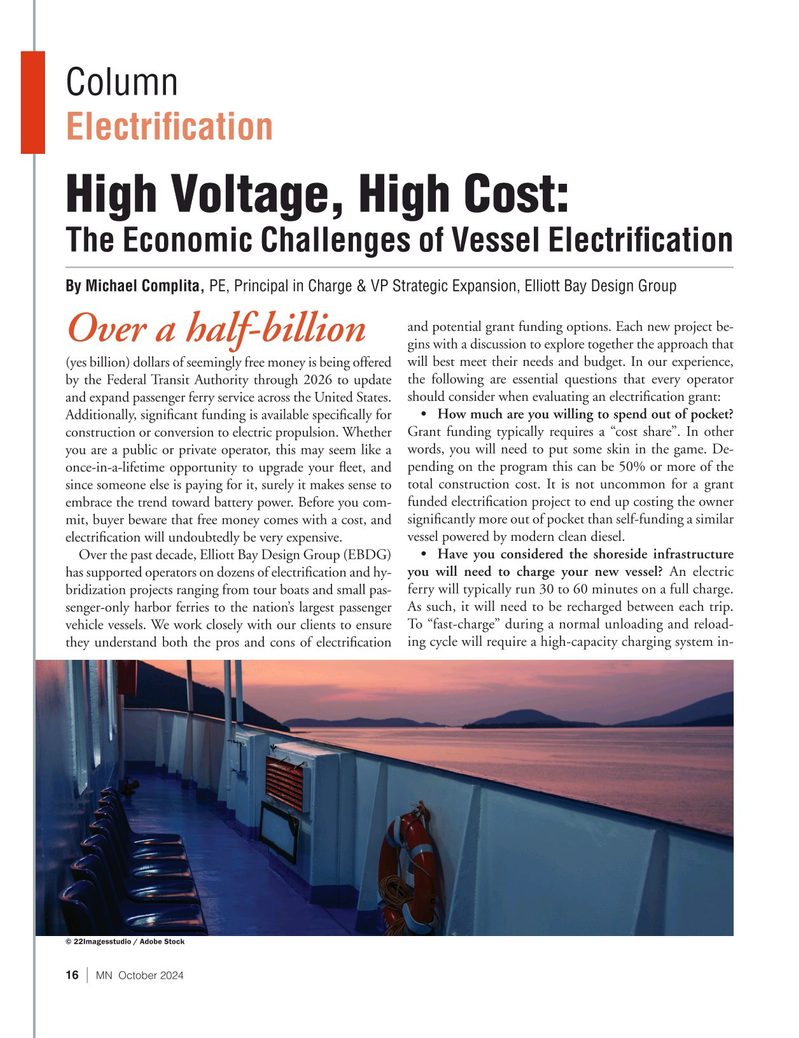
Page 16: of Marine News Magazine (October 2024)
Read this page in Pdf, Flash or Html5 edition of October 2024 Marine News Magazine
Column
Electrifcation
High Voltage, High Cost:
The Economic Challenges of Vessel Electrifcation
By Michael Complita, PE, Principal in Charge & VP Strategic Expansion, Elliott Bay Design Group and potential grant funding options. Each new project be-
Over a half-billion gins with a discussion to explore together the approach that (yes billion) dollars of seemingly free money is being offered will best meet their needs and budget. In our experience, by the Federal Transit Authority through 2026 to update the following are essential questions that every operator and expand passenger ferry service across the United States. should consider when evaluating an electrifcation grant:
Additionally, signifcant funding is available specifcally for • How much are you willing to spend out of pocket? construction or conversion to electric propulsion. Whether Grant funding typically requires a “cost share”. In other you are a public or private operator, this may seem like a words, you will need to put some skin in the game. De- once-in-a-lifetime opportunity to upgrade your feet, and pending on the program this can be 50% or more of the since someone else is paying for it, surely it makes sense to total construction cost. It is not uncommon for a grant embrace the trend toward battery power. Before you com- funded electrifcation project to end up costing the owner mit, buyer beware that free money comes with a cost, and signifcantly more out of pocket than self-funding a similar electrifcation will undoubtedly be very expensive. vessel powered by modern clean diesel.
Over the past decade, Elliott Bay Design Group (EBDG) • Have you considered the shoreside infrastructure has supported operators on dozens of electrifcation and hy- you will need to charge your new vessel? An electric bridization projects ranging from tour boats and small pas- ferry will typically run 30 to 60 minutes on a full charge. senger-only harbor ferries to the nation’s largest passenger As such, it will need to be recharged between each trip. vehicle vessels. We work closely with our clients to ensure To “fast-charge” during a normal unloading and reload- they understand both the pros and cons of electrifcation ing cycle will require a high-capacity charging system in- © 22Imagesstudio / Adobe Stock 16 | MN October 2024

 15
15

 17
17
